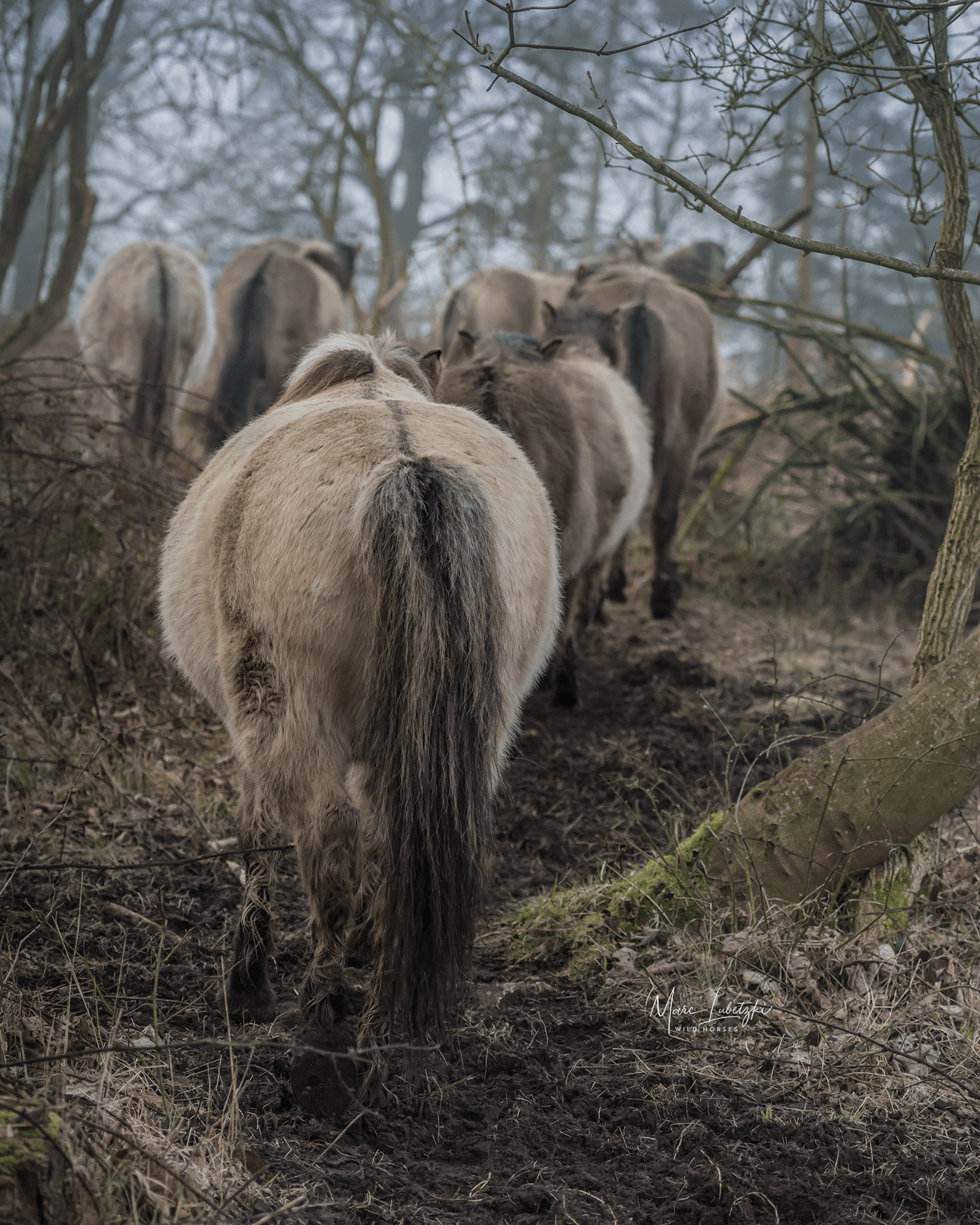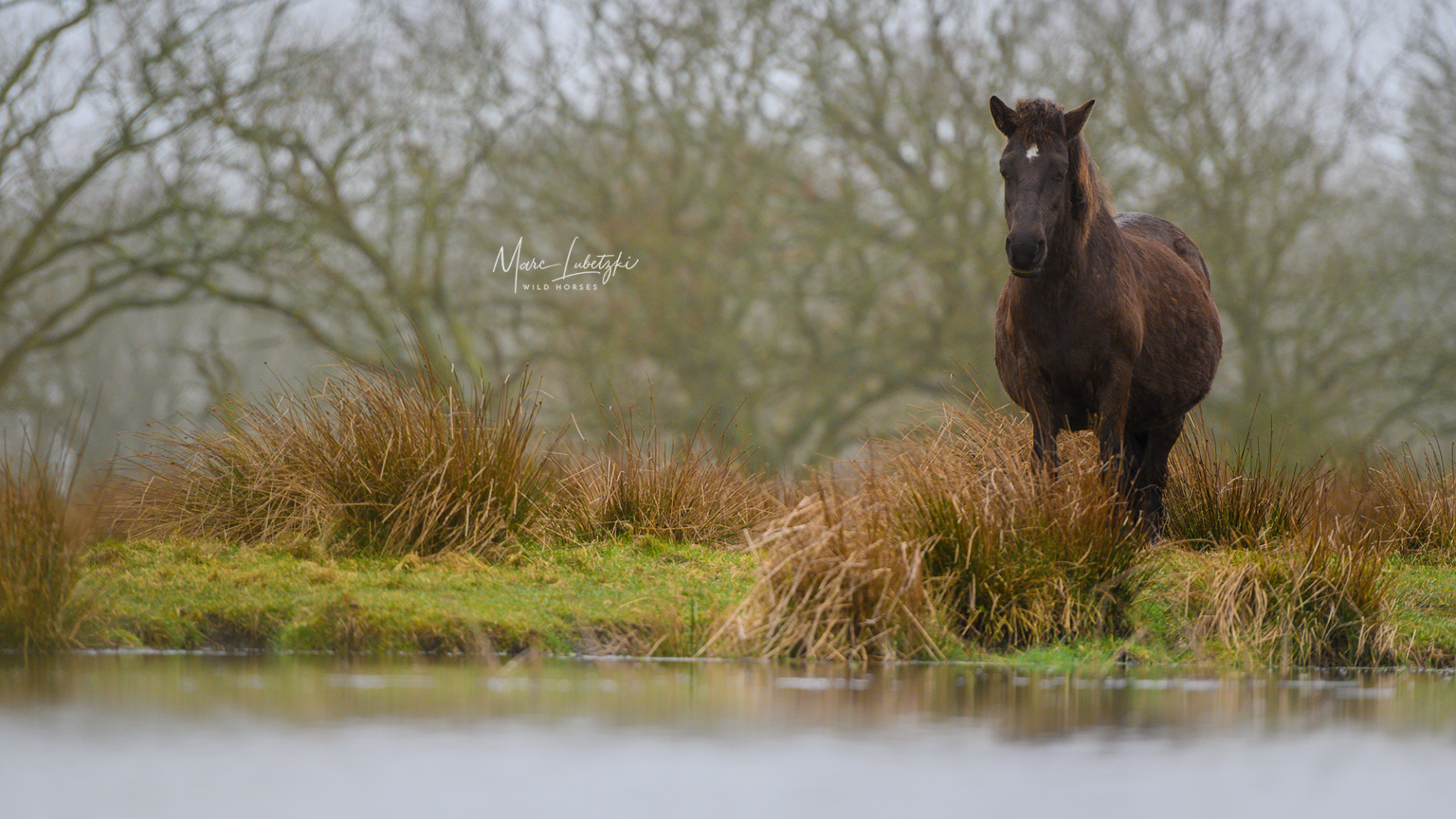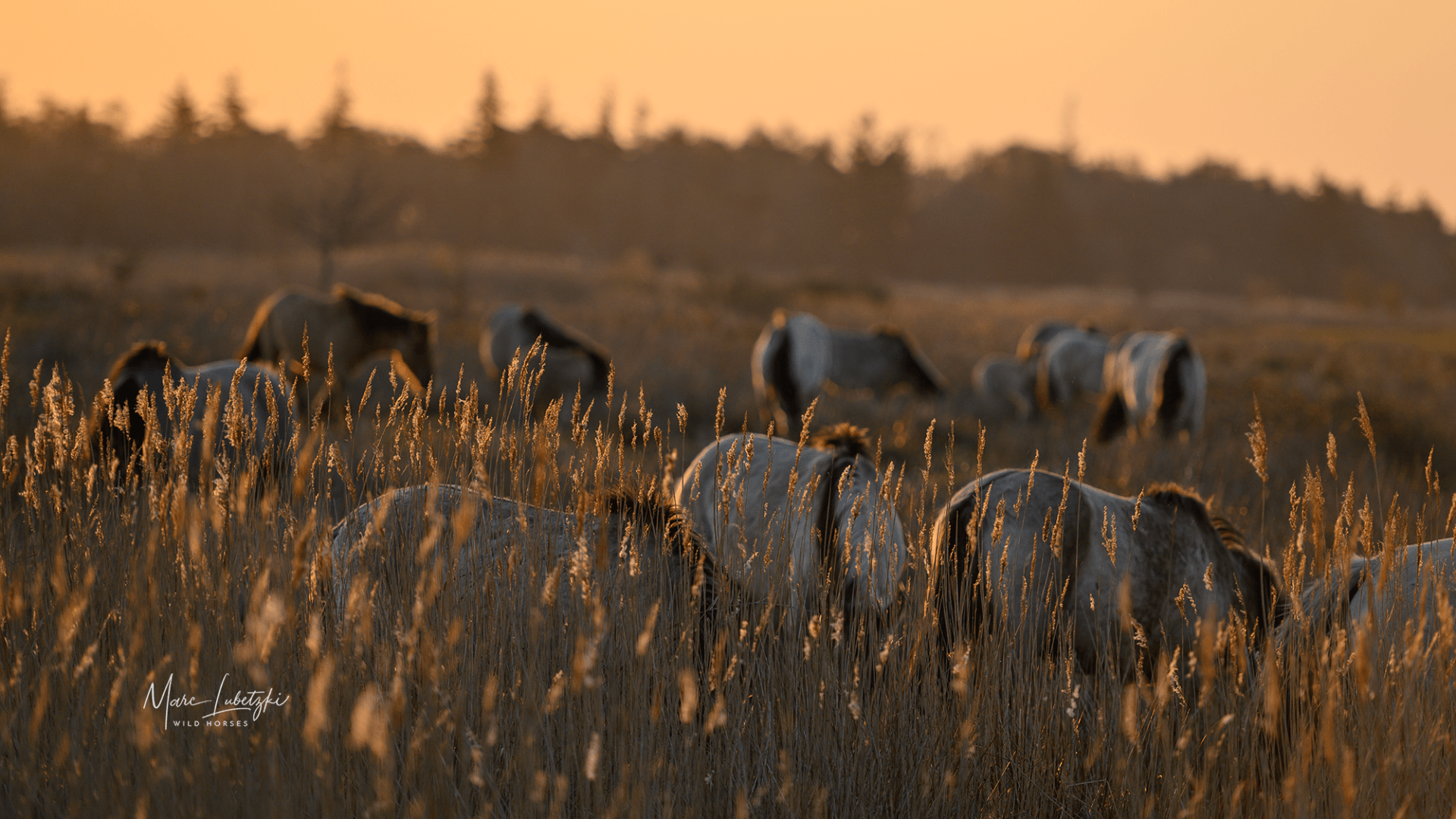Who takes over the leadership in a herd at night?
The day is drawing to a close. For the night's rest the wild horses usually leave their grazing grounds. But which horse takes over the leadership and decides when and where to go to rest at night?
A pleasant silence lies over the vast plain. The horses are not yet showing any signs of leaving. Widespread they stand in their grazing grounds. Only the senior stallion stays a bit apart from the group. But that's perfectly normal. He often changes his position in the herd. Sometimes he stands in the middle of his mares and an hour later he is almost one hundred meters away from his herd.
Now he's standing a bit apart again, between his grazing herd and a small forest. The senior stallion stopped eating a while ago and is now watching his herd when he suddenly makes a deep muttering sound. It is a very quiet muttering, but it can be heard clearly by every horse. Nevertheless, none of the mares raise their heads and no horse interrupts the grazing.
The forest is dark and confusing. Of course, the wild horses will not spend the night here. They will only pass the forest and will take the night's rest either at the edge of the forest or in another open area. The herd is moving almost silently. No neighing or snorting can be heard. Nor do I hear any twigs cracking. I, too, try to walk along as quietly as possible. After a while I realize that this is not as difficult as I thought it would be.
The horses walk either on well-trodden paths or over ground covered with oak leaves. As the distance between the trees increases, the horses in front leave the chosen path. The senior stallion takes over his leadership position and stops this behavior immediately. He leads the mares back to the old path by making clear gestures. While he was very tolerant and patient at the time of departure, he is now extremely direct and dynamic in his leadership.
CROSS THE WOODS
Half an hour passes by. The situation remains the same. The senior stallion continues to stand between the forest and the herd and the mares, foals and young horses continue eating the grasses. The next moment there is a quiet mumbling sound again. This time the mares react to the signal from the senior stallion and interrupt the grazing. One horse after the other sets off towards the forest. The senior stallion, however, stops and waits until all the horses from his herd have passed him.
What is leadership?
The leadership in a herd changes according to the situation. The well-being of the herd is always the most important criterion. This is why the senior stallion did not have to insist on an immediate reaction to his first command at the time of the change of location.
The situation of changing the direction in the forest, however, was about the safety of the herd and therefore he could not allow it. However, if a mare deviates only slightly from the path in order to find a better place for her foal to cross a stream, the senior stallion will pass the leadership to the mare for this particular moment. Just like when it comes to choosing the location to give birth.
Newsletter
Subscribe to our newsletter to stay up to date!
FELL FREE TO SHARE THE ARTICLE






